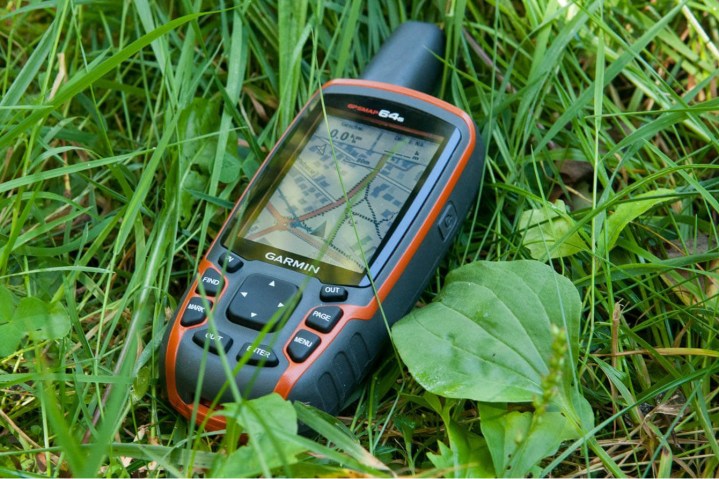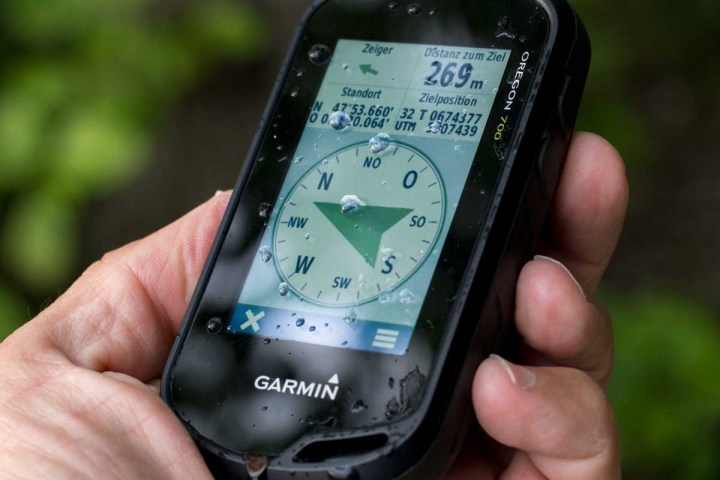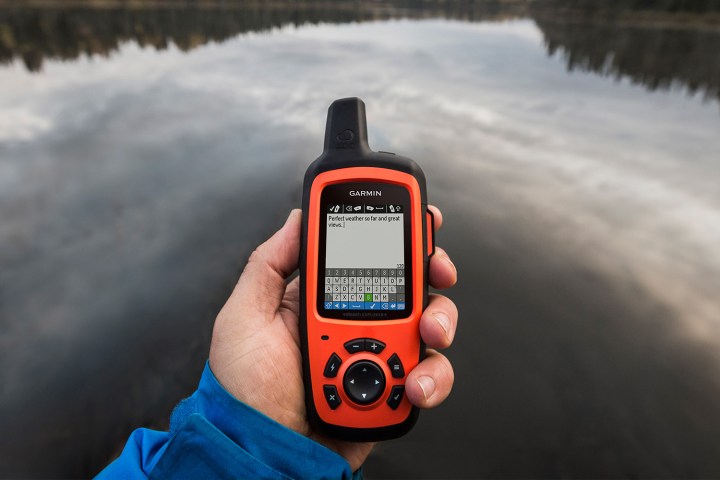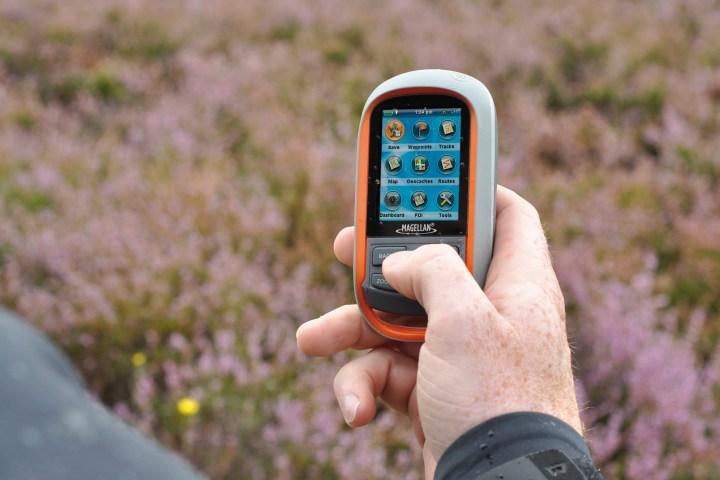Losing yourself in nature can be a gratifying, enlightening experience — that is until you literally lose yourself in nature. Going off the beaten path is fun, and hiking or backpacking trips often involve more than a little exploration. Unfortunately, it’s almost too easy to wander into a part of the wilderness your map doesn’t include and that can entail unforeseen dangers.
Luckily, we’ve got Global Positioning System satellites overhead to help us find our way. The GPS project, which became officially operational in 1995, was developed by the United States Department of Defense to overcome the limitations of previous navigation systems, and the network — operated by the U.S. Air Force — is freely accessible for anyone with a GPS receiver. These handy gizmos, which today do much more than just track routes and drop virtual waypoints, can be the difference between life or death in the wilderness.
To that end, we’ve compiled a list of the best hiking GPS devices for everything from a day hike on your local trail to backpacking the entire Appalachian Trail.
Garmin GPSMAP 64s

Get used to seeing Garmin products on this list, because there are few (if any) companies that can compete when it comes to making a quality GPS device. The GPSMAP 64s ($300) is an all-around powerhouse, with almost every feature you could ask for, plus a few you didn’t know you needed. The quad-helix antenna, which connects to both the American GPS network and the Russian GLONASS system, ensures accurate location data even when under a heavy canopy. The device’s onboard 4GB of storage also allows for up to 5,000 different waypoints and 200 different routes to be stored. It even comes with a detailed worldwide base map to help with navigation just about anywhere.
This device can wirelessly share routing and map information with other compatible devices, and it comes with 250,000 preloaded geocaches, in case geocaching is your jam. The sturdy physical-button design means you can comfortably use the 64s even while wearing gloves, and its battery lasts for up to 16 hours of use. It even synchronizes with your smartphone to provide smart notifications, in case a heavy storm is about to roll in. As if that wasn’t enough, the 64s can be paired with optional ANT+ sensors — like thermometers and heart rate monitors — to provide highly specific data. All in all, this is amongst the most versatile GPS hiking devices that you can buy.
Garmin Oregon 700

For hikers wanting a full-featured GPS device, Garmin’s under $400 Oregon 700 is a perfect choice. The 3-inch color touchscreen display is optimized for use in direct sunlight and feels responsive, much more like a smartphone than a clunky GPS locator. Like the GPSMAP 64s, the Oregon 700 utilizes both GPS and GLONASS technology to ensure location accuracy, though it’s not as quick to get a signal due to its lack of antennae. The Oregon also comes equipped with Bluetooth, so you can transmit data to and from compatible devices, as well as WiFi for downloading weather reports and geocache locations.
Like previous generation Oregon devices, the 700 utilizes multitouch technology, making it much easier to interact with. Navigating maps is a breeze as well, and the user interface is surprisingly simple. The durable Gorilla Glass cover pulls double duty here, simultaneously protecting the screen and improving readability, no matter the weather conditions. The Oregon also switches back and forth between portrait and landscape orientation, a feature oddly few other GPS devices offer.
Other features include an electronic compass, accelerometer, and barometric altimeter to help you track direction while standing still and chart your elevation gain and loss throughout the hike. The Oregon 700 is also capable of being used for navigating on the water and getting turn-by-turn driving directions, making it one of the more versatile GPS devices on the market.
Garmin Oregon 700
Spot X Satellite Messenger

For a completely different type of GPS device, the Spot X satellite messenger may be what you’re looking for. Like Garmin’s inReach Explorer+, this gadget allows users to send messages to friends and family back home using satellite communications. The device also offers real-time location tracking, making it easy for others to follow along as you hike and its handy SOS feature could literally be a lifesaver should the user run into trouble while in the backcountry.
The Spot X doesn’t come with preloaded maps like many other GPS devices, although it does have an onboard digital compass and can be programmed with waypoints to help with navigating through remote places. It’s lightweight, features 10 full days of battery life thanks to a rechargeable lithium-ion battery, and is water and drop-proof. Like the Explorer+, the Spot X also requires a subscription service to get its full functionality. Prices start at $20/month.
:
Garmin inReach Explorer+

In 2016, Garmin acquired satellite tracking and messaging company DeLorme and appropriated the technology used in its inReach Explorer+ device to create this satellite messenger-GPS hybrid. Iridium satellite coverage enables global two-way text messaging from anywhere on the planet and a dedicated SOS function automatically triggers a notification to the 24/7 search and rescue monitoring center. The Explorer+ also comes preloaded with maps, as well as an electronic compass, accelerometer, and barometric altimeter.
If the included maps don’t work for you, you can simply pair to a mobile device and download the free Earthmate app (iOS/Android) for access to aerial imagery, NOAA (National Oceanic and Atmospheric Administration) charts, and topographical map data. The unfortunate kicker: You’ll need to subscribe to one of Garmin’s annual plans to use this device. The plans aren’t cheap (starting at around $120/year), so this isn’t a stocking stuffer for walking in the park. The cheaper plans allow you to create pre-set messages to be sent anytime, while the more expensive plans offer the ability to type out custom messages when — and where — they like.
True explorers and outdoor professionals though, will surely appreciate the value the $450 Explorer+ brings.
Suunto Traverse

There are a lot of great GPS watches designed for hikers and while finding the right one can be a challenge, it’s tough to beat the Suunto Traverse. Built with a suite of features backpackers and travelers need in a lightweight and good-looking package, this tracker costs just $335. Designed on Suunto’s Ambit platform, the Traverse does away with many of the features designed for the outdoor athlete to focus on things more important to hikers. For instance, it has the ability to count steps, comes with a flashlight backlit display, and it provides vibration alerts — it also adds GLOSNASS support.
Wearing the Traverse is like having a full-featured GPS device strapped to your wrist, including navigation, way-finding, real-time route tracking, and topographical maps via Suunto’s Movescount app (iOS/Android). The watch also tracks speed, distance, and altitude, recording vertical gain and loss along the way. If that isn’t enough, it auto-adjusts its time based on your current location, provides weather alerts, includes location-based times for sunsets and sunrises, has a built-in digital compass, and is waterproof down to 330 feet.
If you’re a casual weekend hiker, or you’re just getting started and don’t want to spend hundreds of dollars on a GPS you’ll rarely use, check out Garmin’s new $110 eTrex 10. This rugged little device is affordable yet still offers plenty of features for casual outdoor enthusiasts. For instance, this device is equipped with a 2.2-inch monochrome display that’s light on the battery (25 hours on two AA cells) and can be easily read in just about any type of light. It supports both GPS and GLONASS satellites and comes preloaded with a worldwide base map. It’s also water resistant, geocache compatible, and has enough onboard memory to store 50 routes, 10,000 waypoints, and 200 saved tracks.
The eTrex 10 was designed to be versatile enough for use in a variety of activities — Garmin even offers mounts for ATVs, bikes, boats, and automobiles, although you’ll have to upgrade to the to get turn-by-turn navigation. Although the eTrex 10 lacks some fancier features provided by higher-end models, it still manages to offer all the essentials in a very affordable package.
Magellan eXplorist 310

Proving that Garmin doesn’t entirely dominate the field, the $160 Magellan eXplorist is an excellent basic model that serves as an affordable option for geocaching. Pre-loaded with the World Edition map, this product is ready for navigation right out of the box. The GPS is accurate to within 10 to 15 feet and is powered by two AA batteries, providing for 18 hours of continuous use. The base maps include roads and geographic features and the eXplorist marks waypoints in addition to showing your trip progress with tracks. The color screen is easy to read in direct sunlight and the device includes a loop at the bottom for hanging or attaching to a pack.
The Magellan eXplorist is especially useful during geocaching, with a summary page that lets you know how you did and how long it took for you to uncover each cache. The product includes a 3.2-megapixel camera, video, and voice recorder, making for a mid-range device with all the bells and whistles at an affordable price — no doubt an excellent entry-level GPS device.
:
What to look for in a hiking GPS
Screen type: If it’s a touchscreen, it’ll be easier to navigate, and for some users offer a sense of familiarity since they operate like smartphones. On the other hand, not all touchscreens are glove or mitten compatible, so if there’s the potential for inclement weather on your trip, you may want to choose a device with buttons.
Sensors: Barometric altimeters, thermometers, and electronic compasses can be vital tools. Cheaper GPS devices rarely include these sensors.
Car navigation: Some handheld GPS devices can effectively double as dashboard-mounted navigation in your vehicle. Few have screens that are big enough and clear enough, though.
Bluetooth connectivity: Devices that can communicate with one another to share maps, geocaches, and topographical data can be very valuable. You can save precious time if all members of your party are using compatible devices.
Satellite communication: Some GPS devices are capable of communicating from remote areas, even where cell networks don’t exit. If you’re planning a long trip or going deep into the rough, one of these could be the difference between life and death (hopefully not, though).
Smartphone compatibility: Some high-end handheld GPS navigators are capable of synchronizing with smartphones to provide “smart notifications.” This can be a handy tool when an unfriendly weather front is rolling in, or getting notifications from friends and family too.
Camera: Realistically, most people have a smartphone with a better camera than any GPS, but if you’d prefer to leave your phone at home (or if you can’t afford to waste the battery for some reason or another), you can snag a navigator with a decent onboard camera (for posterity).
Geocaching options: Some GPS devices come pre-loaded with geocache locations, and software designed specifically for geocaching. If not, you can usually upload your own via cable or SD card, but it’s still a fun addition to keep in mind.
Editors' Recommendations
- The best action cameras
- The best camper vans
- The best walkie-talkies
- The best smart helmets for 2019



